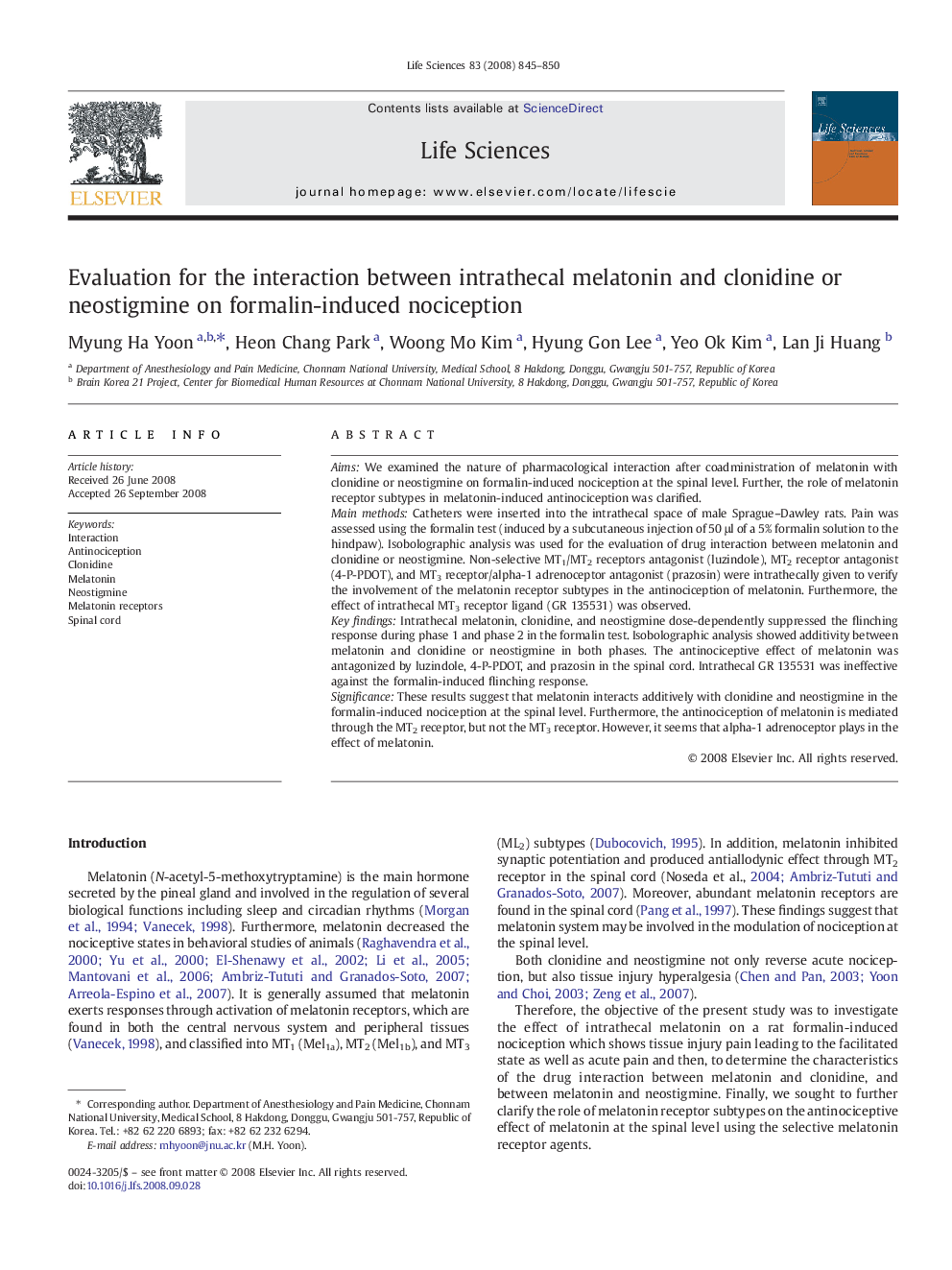| Article ID | Journal | Published Year | Pages | File Type |
|---|---|---|---|---|
| 2553381 | Life Sciences | 2008 | 6 Pages |
AimsWe examined the nature of pharmacological interaction after coadministration of melatonin with clonidine or neostigmine on formalin-induced nociception at the spinal level. Further, the role of melatonin receptor subtypes in melatonin-induced antinociception was clarified.Main methodsCatheters were inserted into the intrathecal space of male Sprague–Dawley rats. Pain was assessed using the formalin test (induced by a subcutaneous injection of 50 μl of a 5% formalin solution to the hindpaw). Isobolographic analysis was used for the evaluation of drug interaction between melatonin and clonidine or neostigmine. Non-selective MT1/MT2 receptors antagonist (luzindole), MT2 receptor antagonist (4-P-PDOT), and MT3 receptor/alpha-1 adrenoceptor antagonist (prazosin) were intrathecally given to verify the involvement of the melatonin receptor subtypes in the antinociception of melatonin. Furthermore, the effect of intrathecal MT3 receptor ligand (GR 135531) was observed.Key findingsIntrathecal melatonin, clonidine, and neostigmine dose-dependently suppressed the flinching response during phase 1 and phase 2 in the formalin test. Isobolographic analysis showed additivity between melatonin and clonidine or neostigmine in both phases. The antinociceptive effect of melatonin was antagonized by luzindole, 4-P-PDOT, and prazosin in the spinal cord. Intrathecal GR 135531 was ineffective against the formalin-induced flinching response.SignificanceThese results suggest that melatonin interacts additively with clonidine and neostigmine in the formalin-induced nociception at the spinal level. Furthermore, the antinociception of melatonin is mediated through the MT2 receptor, but not the MT3 receptor. However, it seems that alpha-1 adrenoceptor plays in the effect of melatonin.
